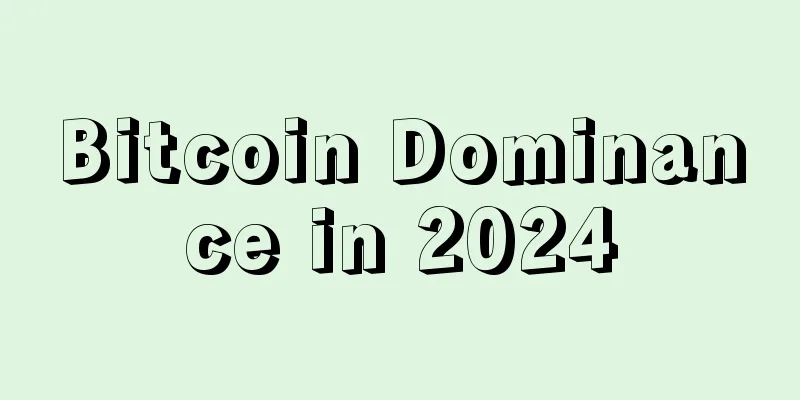Blockchain Weekly Report | DeFi attracts SEC regulatory attention, Bank of England considers issuing digital currency

|
The scale of crypto assets represented by Defi has grown rapidly, attracting the attention of SEC regulators. According to The Block, Hester Peirce, a member of the U.S. Securities and Exchange Commission (SEC) and known as the "crypto mom," said in an interview that although DeFi is still in its early stages, the committee has begun to pay attention to this because DeFi raises game-changing issues and challenges existing regulatory methods. According to Debank data, the total locked assets of DeFi exceeded US$10 billion on September 1, more than double the amount a month ago. The top-ranked DeFi project is the decentralized exchange Uniswap, with a total locked amount of more than US$1.5 billion. Since a considerable number of DeFi projects are based on Ethereum, the popularity of the project once caused Ethereum to be very congested. In August, Ethereum miners generated more than US$100 million in fees, three times that of Bitcoin miners. On September 1, Ethereum miners earned US$17 million in fees throughout the day, setting a new record. After the DeFi market reached its peak on September 1, it led to a decline in the overall currency market. The star project Sushi (a liquidity mining project) saw its price drop by more than 90%, but the total market lock-up volume is still more than US$9.2 billion. We believe that distributed finance such as DeFi can certainly use smart contracts to take advantage of decentralization, but the quality of the underlying assets is still the key factor, which determines whether DeFi can combine high-quality underlying assets to break existing rules and the success or failure of financial innovation. As crypto assets stir up the financial markets, traditional financial institutions are not far behind. On September 1, the official website of the Vienna Stock Exchange Wiener Börse, one of the largest stock exchanges in Central Europe, announced that it would start trading exchange-traded products (ETPs) for Bitcoin and Ethereum from September 1, 2020, with the value of the two cryptocurrencies replicated 1:1. The product is issued by Swiss fintech company 21 Shares AG, and the names of the two ETPs are "ABTC" and "AETH". These are the first cryptocurrency-centric ETPs recognized by the Vienna Stock Exchange. The listing on the Vienna Stock Exchange means that the largest exchanges in each of the three German-speaking regions - Germany, Austria and Switzerland - now recognize Bitcoin ETPs. The Governor of the Bank of England said that the Bank of England is considering issuing a central bank digital currency. According to Cailian News, the Governor of the Bank of England, Bailey, said that the Bank of England is considering issuing a central bank digital currency, but at the same time he believes that crypto assets are not suitable for the payment field, and crypto assets have nothing to do with currency; stablecoins can provide some useful benefits in terms of payment. Last week's market review: Chainext CSI 100 fell 14.35%, and entertainment and social networking performed best among the sub-sectors. From the perspective of sub-sectors, payment transactions, entertainment and social networking, and pure currency are better than the average level of Chainext CSI 100, at -11.08%, 3.07%, and -12.51%; Internet of Things & Traceability, Commercial Finance, Basic Enhancement, Basic Chain, Storage & Computing, and AI performed worse than the average level of Chainext CSI 100, at -28.23%, -23.30%, -24.01%, -17.07%, -23.96%, and -28.09%. Risk warning: regulatory policy uncertainty and blockchain infrastructure development failing to meet expectations. 1. DeFi "challenges" traditional financial market rules, and the Bank of England considers issuing digital currency The scale of crypto assets represented by Defi is growing rapidly, trying to promote innovation in the financial market. According to The Block, Hester Peirce, a member of the U.S. Securities and Exchange Commission (SEC) and known as the "crypto mom," said in an interview that although DeFi is still in its early stages, the committee has begun to pay attention to this because DeFi raises game-changing issues and challenges existing regulatory methods. According to Debank data, the total locked assets of DeFi exceeded US$10 billion on September 1, more than doubled from a month ago. The top-ranked DeFi project is the decentralized exchange Uniswap, with a total locked amount of more than US$1.5 billion. Since a considerable number of DeFi projects are based on Ethereum, the popularity of the project once caused Ethereum to be very congested. In August, Ethereum miners generated more than US$100 million in fees, three times that of Bitcoin miners. On September 1, Ethereum miners earned US$17 million in fees throughout the day, setting a new record. After the DeFi market reached its peak on September 1, it led to a decline in the overall currency market. The star project Sushi (a liquidity mining project) saw its price drop by more than 90%, but the total market lock-up volume is still more than US$9.2 billion. We believe that distributed finance such as DeFi can certainly use smart contracts to take advantage of decentralization, but the quality of the underlying assets is still the key factor, which determines whether DeFi can combine high-quality underlying assets to break existing rules and the success or failure of financial innovation. As crypto assets stir up the financial markets, traditional financial institutions are not far behind. On September 1, the official website of the Vienna Stock Exchange Wiener Börse, one of the largest stock exchanges in Central Europe, announced that it would list and trade exchange-traded products (ETPs) for Bitcoin and Ethereum from September 1, 2020, with the value of the two cryptocurrencies replicated 1:1. The product is issued by Swiss fintech company 21 Shares AG, and the names of the two ETPs are "ABTC" and "AETH". These are the first cryptocurrency-centric ETPs recognized by the Vienna Stock Exchange. The listing on the Vienna Stock Exchange means that the largest exchanges in each of the three German-speaking regions - Germany, Austria and Switzerland - now recognize Bitcoin ETPs. In 2018, 21 Shares AG launched its first cryptocurrency ETP product on the SIX Swiss Exchange, codenamed "HODL", which consists of 48.6% Bitcoin, 30.89% Ethereum, 12.54% Ripple, 3.01% Bitcoin Cash and 2.95% Litecoin. In early July this year, its Bitcoin ETP was launched on Xetra, the electronic trading platform of Deutsche Börse. The ETP is called BTCE and is 100% backed by physical Bitcoin. According to The Block, 21Shares announced on August 17 that its assets under management exceeded $100 million for the first time, and the demand for its products from European retail and institutional investors is still growing rapidly. The Governor of the Bank of England said that the Bank of England is considering issuing a central bank digital currency. According to Cailian News, the Governor of the Bank of England, Bailey, said that the Bank of England is considering issuing a central bank digital currency, but at the same time he believes that crypto assets are not suitable for the payment field, and crypto assets have nothing to do with currency; stablecoins can provide some useful benefits in payment. But he also reminded that cryptocurrencies may play a role in payments in the private and public sectors, but relevant standards need to be established to avoid risks in catching up with innovation. Governor Bailey believes that stablecoins have some useful advantages: for example, payment friction can be further reduced by increasing payment speed and reducing payment costs, especially if a global stablecoin system can be established. The effect is more obvious, and stablecoins and central bank digital currencies can coexist and work together. At the same time, Bailey called on financial regulators to stay ahead in new technologies such as stablecoins and crypto assets to prevent problems such as unstable monetary policy and money laundering. 2. Government related news: China's first international standard for financial blockchain was successfully established China: China's first international standard for financial blockchain, "Guidelines for the Application of Financial Distributed Ledger Technology", was successfully approved at the plenary meeting of the 16th Study Group (SG16) of the International Telecommunication Union Telecommunication Standardization Sector (ITU-T). The standard was proposed by the Digital Currency Research Institute of the People's Bank of China and jointly initiated with the China Academy of Information and Communications Technology, Huawei and other units. This standard is a framework standard. China can use it to plan and layout the international standard system for financial blockchain, add sub-standards such as reference architecture, risk control, security and privacy protection, and other business specifications in various fields. Through the "one-to-many" approach, it will promote the standardization of important aspects of financial blockchain, promote the healthy development of financial blockchain technology and related industries, and make more contributions to the setting of international rules. Russia: The Russian Ministry of Finance proposes to amend the law prohibiting crypto trading. Russia's "Digital Financial Assets" law (DFA) prohibits many crypto operations and aims to prohibit miners from receiving rewards for cryptocurrency mining. The Russian Ministry of Finance proposed a set of amendments to it, which envisions "a complete ban on individuals and individual entrepreneurs from conducting any operations with virtual currencies," except in three cases, namely, the acquisition of assets through inheritance, bankruptcy and enforcement procedures. Bermuda: The Bermuda government announced that it has launched a pilot program for digital stimulus tokens (Stimulus Token) in cooperation with the local private payment platform Stablehouse, which is expected to provide initial feedback on the feasibility of digital tokens in facilitating the purchase of basic products and services. In 2019, Bermuda began to develop a blockchain-based digital identity system, and the public can use stablecoin USDC to pay taxes. The development of stimulus tokens will be launched later this year as part of the government's initiative to create a comprehensive crypto ecosystem that supports digital currencies on the island. Risk Warning Uncertainty in regulatory policies. Currently, blockchain is in its early stages of development, and there is a certain degree of uncertainty in the regulation of blockchain technology, project financing, and tokens in countries around the world, so there is uncertainty in the development of industry company projects. The development of blockchain infrastructure has not met expectations. Blockchain is the core technology for solving supply chain finance and digital identity problems. Currently, blockchain infrastructure cannot support high-performance network deployment. The degree of decentralization and security will have certain constraints on high performance. There is a risk that the development of blockchain infrastructure will not meet expectations. |
<<: UMA and REN jointly launch liquidity mining, a simplified tutorial on one mine and three mining
>>: Hackers paralyzed the Argentine border crossing and demanded a $4 million BTC ransom
Recommend
Poor and lazy man
Poor and lazy man Narrow forehead The brow is loc...
What does a mole on the back of the neck mean? Did you know?
1. Get rich In physiognomy, if a person has a mol...
A man with thick eyebrows
For a person, facial features often bring a lot o...
What kind of man can marry a woman who brings prosperity to her husband?
1. Men with full and broad foreheads This type of...
What are the facial features of a popular woman? Facial analysis!
Physiognomy is a kind of folk knowledge that infe...
Tips for Elon Musk: How to build a decentralized version of Twitter?
Musk won. On April 25, Twitter and Musk reached a...
See your character and destiny from people
The philtrum is located at the midpoint of the na...
The myth of making money is being targeted! SEC is going to bring the hottest digital currency issuance ICO under supervision
The U.S. Securities and Exchange Commission (SEC)...
Men who like to beat women
Men who like to beat women Domestic violence inci...
Brazilian police accidentally discovered a Bitcoin mining farm suspected of money laundering
Brazilian police have arrested suspects suspected...
What does a mole on a woman's neck mean?
Each of us has moles of varying sizes on our bodi...
Is it good for a man to have high cheekbones? Let's analyze it for you
The zygomatic bone is a very important part of ph...
Announcement | Ethereum Constantinople Upgrade Announcement
The Ethereum network will activate the planned up...
What are peacock eyes? Peacock eyes face reading
What does a peacock eye look like? Analysis of pe...
The impact of SEPA instant remittances on the European Bitcoin trading market
Not long ago, the European Central Bank announced...









